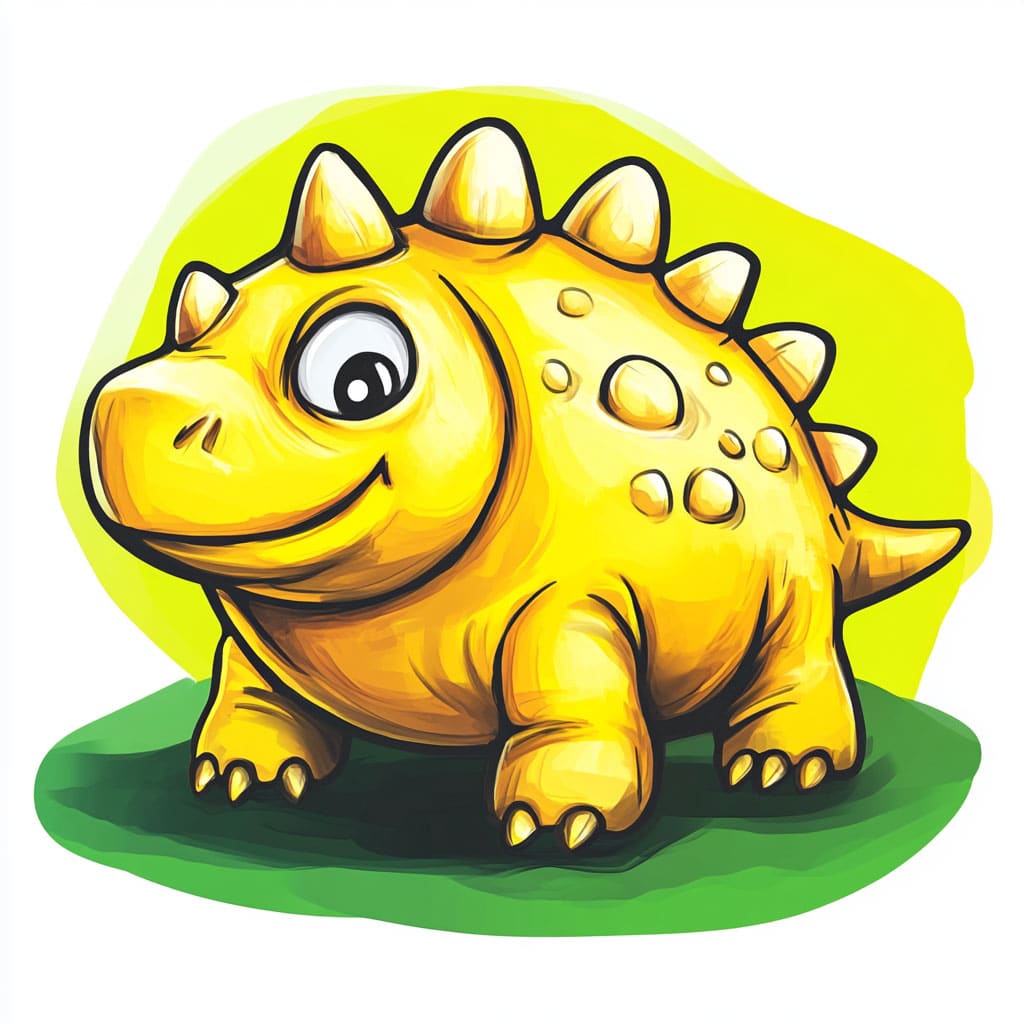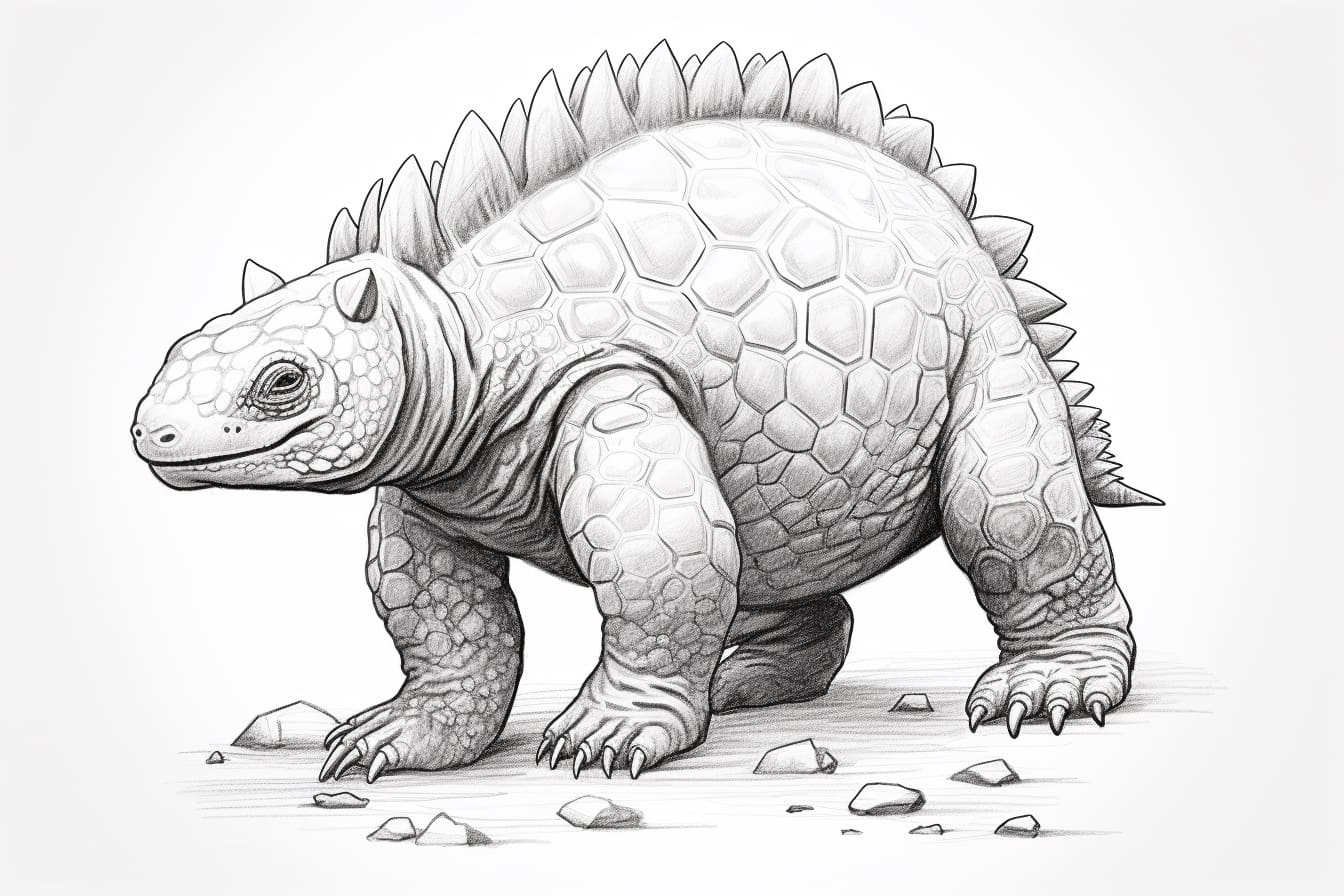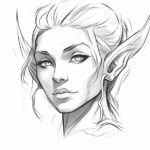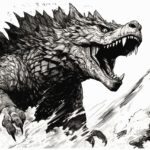
Welcome to the captivating realm of prehistoric artistry, where we will embark on an exciting journey of drawing the Ankylosaurus! This remarkable dinosaur isn’t just any creature; it’s often likened to an armored tank of the Mesozoic era. Characterized by its hefty body encased in formidable bony plates and a powerful tail equipped with a striking club, the Ankylosaurus stands as one of the most fascinating dinosaurs discovered thus far. Whether you are a seasoned artist or just starting out, sketching this ancient giant promises to be a thrilling challenge that invites creativity and imagination.In this drawing tutorial, we will delve deep into the Ankylosaurus’s distinctive features, focusing on the anatomy that makes it a true icon of the dinosaur kingdom. You’ll learn how to depict its unique silhouettes, the intricacies of its armor, and the impressive strength conveyed through its imposing posture. Embrace the opportunity to channel your inner paleontologist and artist as we guide you step-by-step in capturing the true essence of this prehistoric powerhouse on paper.Get ready to unleash your creativity! With just a pencil and paper, you can breathe life into the Ankylosaurus, transforming mere outlines into a vivid portrayal of this majestic creature. So, gather your materials, prepare for some artistic fun, and let’s embark on this journey to bring the Ankylosaurus to life through the art of drawing!
Materials Required
To draw an Ankylosaurus, you will need the following materials:
- Pencil: for sketching the initial outline and details of the dinosaur
- Eraser: to correct any mistakes and refine your drawing
- Paper: preferably sketch paper or drawing paper that can handle pencil shading
- Colored pencils or markers: to add color and details to your Ankylosaurus drawing
- Reference images of Ankylosaurus: to accurately depict the dinosaur’s anatomy and features
- Optional: blending tools like blending stumps or tortillons for smooth shading and blending of colors
With these materials, you can create a detailed and realistic drawing of an Ankylosaurus.
How to Draw an Ankylosaurus: a Step-by-step Guide
Step 1: Gather Your Materials
Before you start drawing, gather all the necessary materials:
- Pencil
- Paper
- Eraser
- Ruler (optional for straight lines)
- Reference images of Ankylosaurus for inspiration
Step 2: Start with Basic Shapes
Begin by lightly sketching the basic shapes of the Ankylosaurus to establish its proportions. Start with an oval for the body, a smaller oval for the head, and smaller circles for the limbs and tail.
Step 3: Add Details to the Body
Refine the body shape by adding more details such as the armor plates along its back. Ankylosaurus had thick, bony plates that acted as protective armor. Sketch these plates along the top of the body.
Step 4: Outline the Limbs and Tail
Next, outline the limbs and tail of the Ankylosaurus. Make sure to capture the sturdy and powerful appearance of its legs, which were designed for supporting its massive body weight.
Step 5: Draw the Head and Tail Club
Focus on drawing the head of the Ankylosaurus, paying attention to its distinct features like the small eyes and bony knobs on the skull. Include the signature tail club at the end of the tail, which was used for defense.
Step 6: Refine the Details
Refine your sketch by adding more intricate details like scales, texture, and shading to make the Ankylosaurus look more realistic and three-dimensional. Take your time with this step to bring your drawing to life.
Step 7: Erase Guidelines
Once you are satisfied with the overall look of your Ankylosaurus drawing, carefully erase any remaining guidelines and unnecessary sketch lines to clean up the final artwork.
Step 8: Add Shadows and Highlights
To enhance the realism of your drawing, add shadows and highlights to give the Ankylosaurus a sense of volume and depth. Use shading techniques to create a sense of light source and form.
Step 9: Final Touches
Lastly, add any final touches or details to your drawing to complete the illustration. Take a step back and assess your artwork to see if any adjustments or refinements are needed before considering it finished.
Conclusion
In conclusion, mastering the art of drawing an Ankylosaurus requires attention to detail, practice, and a deep understanding of the dinosaur’s anatomy. By following the step-by-step guide and incorporating your own creative flair, you can bring this prehistoric creature to life on paper. Remember to be patient with yourself and enjoy the process of bringing a piece of history to life through your artistic talents. Keep practicing, keep refining, and soon you’ll be able to capture the essence of the Ankylosaurus with confidence and skill.
Fun Facts About Ankylosauruses
- Ankylosauruses were herbivorous dinosaurs that lived during the Late Cretaceous period, around 68-66 million years ago.
- They were characterized by their heavily armored bodies, with bony plates called osteoderms embedded in their skin, and a tail club that they used for defense.
- The name “Ankylosaurus” means “fused lizard,” referring to the way its bones were fused together to create a strong, protective armor.
- Ankylosauruses were quadrupedal dinosaurs, meaning they walked on four legs, and were relatively slow-moving due to their large size and heavy armor.
- Despite their armor and defensive capabilities, Ankylosauruses were likely preyed upon by large carnivorous dinosaurs such as Tyrannosaurus rex.
- Fossil evidence suggests that Ankylosauruses may have lived in herds for protection and social interaction.
- They had a unique feeding mechanism, as their teeth were specialized for grinding tough plant material, allowing them to efficiently process their vegetarian diet.
- Ankylosauruses are believed to have had a relatively low metabolic rate compared to other dinosaurs, which may have contributed to their slow movement and large size.
- Some species of Ankylosauruses, such as Ankylosaurus magniventris, could grow up to 30 feet in length and weigh several tons.
- The discovery of well-preserved Ankylosaur fossils has provided valuable insights into the anatomy, behavior, and evolution of these fascinating dinosaurs.
Suggestions for Scenes and Settings for Ankylosaurus Drawings
- Ankylosaurus in a prehistoric forest: Imagine a lush, dense forest filled with towering ferns and ancient trees. Place the Ankylosaurus amidst the greenery, its armored body blending in with the surroundings.
- Ankylosaurus near a freshwater pond: Picture the Ankylosaurus taking a drink from a calm pond, its reflection shimmering in the water. Include details like water plants, dragonflies hovering nearby, and the gentle sound of a nearby waterfall.
- Ankylosaurus defending itself from a predator: Show the Ankylosaurus in a defensive stance, tail raised high and ready to strike. Create tension in the scene by adding a lurking predator like a T-Rex or a pack of raptors in the background.
- Ankylosaurus in a volcanic landscape: Transport the Ankylosaurus to a rugged, volcanic terrain with smoking vents and glowing lava flows. Capture the contrast between the prehistoric creature and the fiery, otherworldly backdrop.
- Ankylosaurus in a sandy desert: Imagine the Ankylosaurus navigating a vast desert landscape, with swirling sand dunes and distant rocky outcrops. Add a touch of mystery by incorporating a setting sun casting long shadows across the scene.
- Ankylosaurus in a snowy tundra: Depict the Ankylosaurus in a winter wonderland, surrounded by snow-covered pine trees and icicle-laden cliffs. Play with the contrast between the dinosaur’s warm, earthy tones and the cool, icy surroundings.
- Ankylosaurus in a coastal marsh: Set the Ankylosaurus in a marshy environment, with cattails, lily pads, and marsh grasses dotting the landscape. Include other prehistoric creatures like pterosaurs flying overhead or a group of duck-billed dinosaurs grazing nearby.
- Ankylosaurus in a rocky canyon: Place the Ankylosaurus in a rugged canyon terrain, with towering cliffs and winding riverbeds. Capture the play of light and shadow on the dinosaur’s armored plates as it navigates the uneven terrain.
- Ankylosaurus in a cave system: Create a sense of mystery by showing the Ankylosaurus exploring dark, cavernous tunnels with stalactites and stalagmites. Use subtle lighting to highlight the dinosaur’s features in the dimly lit environment.









